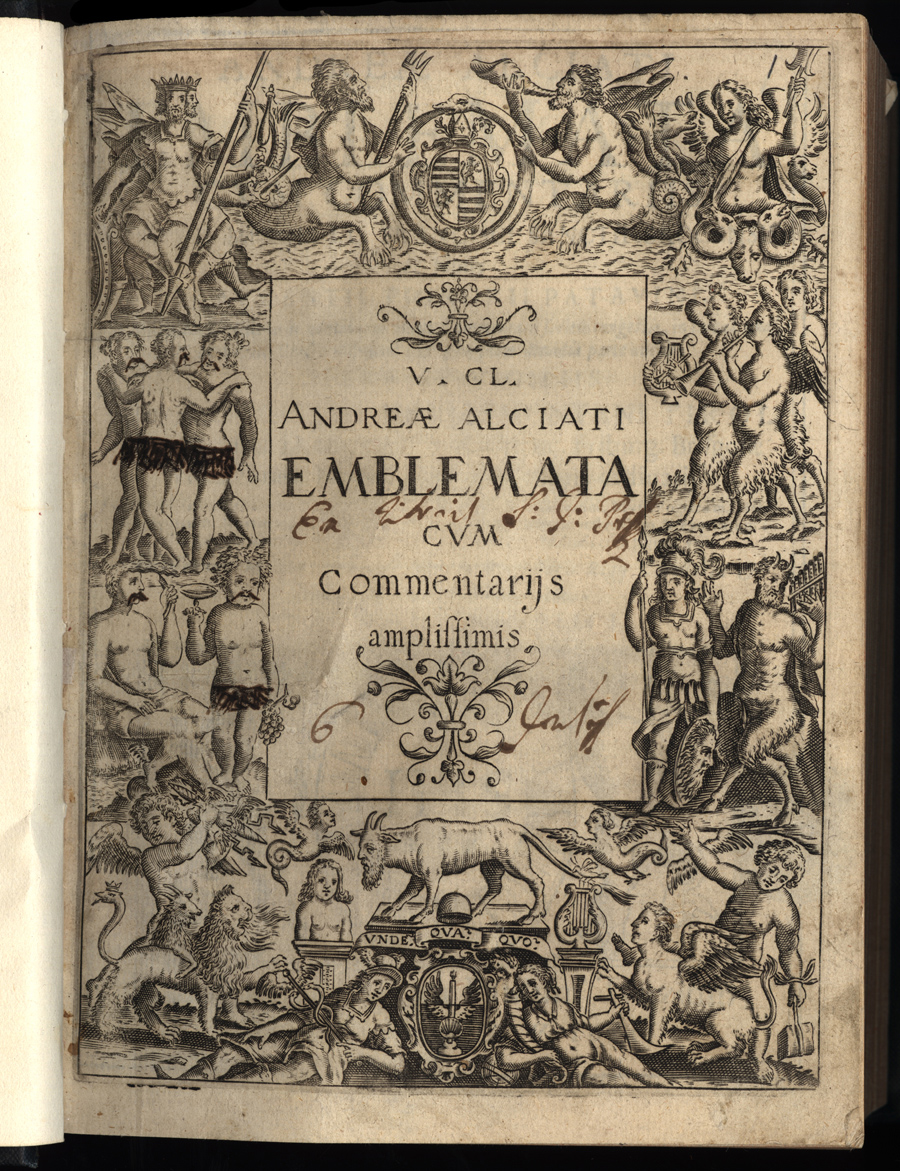7.12 Primers of Virtue
Hunger even compared the emblem book to a primer of virtues and vices, a tool that can profitably be used for educating children to moral virtue from the beginning. Emblems would become one of the emerging genres of children's literature, but the emblem book was never just a primer. Emblems were intended to be reused and reinterpreted in later moments of moral and literary reflection. Then too, emblem books were handsome, artistic products sold at substantial prices. They might well be used with young people but they were not trivial or throw-away books. We have seen this sort of expectation before, that textbooks would not only serve students through their school years but also accompany them for lifelong learning. As the sixteenth century progressed, this way of portraying emblems became more urgent and insistent. It may be that schoolmasters felt that, as the study of grammar and rhetoric became more instrumentalized (emphasizing techniques of composition in place of the earlier humanist ideal of internalizing wisdom through language study), it was all the more necessary to have other texts to hand that could be used for moral education. Print could provide profusely illustrated texts perfectly attuned to this purpose. Whether the marketers of printed emblem books created or followed this perceived pedagogical need we cannot say for sure, but it is clear that in many cases publishers took the lead. It would seem, for example, that Paris printer Christian Wechel first truly popularized Alciati's Latin collection; and it was Wechel who published the first French translation and who encouraged Wolfgang Hunger to complete his German version. (43)
The work of Bartolomé Aneau as editor, translator, and arranger of the emblems of Alciati followed this same pattern. Aneau collaborated closely with several Lyon presses, especially that of Macé Bonhomme (fl. 1536-1569) who had two specialties -- textbooks for teachers of Latin and courtesy books in French. Aneau crossed the boundaries between these two genres. He authored numerous works in French, including plays, fables, and proverbs translated from Greek and Latin. We know that some of his own original emblems were composed to fit woodcuts already in the shop of his printer. In order to make the emblem book more useful for moral education and more valuable for lifelong reference, Aneau developed a "new" Alciati, translated into French but also rearranged. Aneau put 201 emblems drawn from Alciati's earlier collections into a single sequence that presented ethical ideals systematically under a series of topics. The resulting collection was useful pedagogically in two ways. On a day-to-day instructional basis, it allowed teachers to present students with puzzles related to everyday decision making. The emblems presented concrete, pictorial ways of working through everyday moral choices. More generally (and educationally speaking in a second, more mature moment), the exercise of reading emblems provided students with an ethical tool for solving more difficult moral dilemmas and making sense of the world at large. It gave them a mirror in which to contemplate an individual's life problems as part of a larger civilizational ideal. (44)

Hunger and Aneau were merely the first of many Renaissance school masters to adapt emblems for school use. Johannes Köhler has suggested that the extensive commentary on Alciati by Claude Mignault (1536-1606), first published in 1576, was largely intended to describe and circumscribe Alciati for classroom use. (45) The bulky work of Mignault, however, was almost surely not put into the hands of children. If Köhler is correct, it was a teacher's manual for using emblems with students. Many individual emblems embody humanist commonplaces about teaching children; and while some seem aimed at the teaching parenting skills, others were clearly addressed to the children themselves. For example, emblems that recommended reading as a fruitful pastime were probably not in the first instance aimed at bookish adults. (46)
In the course of rewriting and popularizing learned emblems for schoolboys and other, even less Latin-literate audiences (in preaching for example), some authors also tried to limit the possible readings that could be given to the innately puzzle-like emblem. There were several strategies for accomplishing this narrowing of meaning in the service of social control. Some authors circumscribed each emblem with commentary that dictated one or another moral meaning rather than offering a variety of interpretations. Another strategy was to change or expand the verses to direct the reader toward one reading or away from another. Some scholars see these re-writers as favoring a passive approach to emblems. Certainly they tended to simplify the experience. But the emblem remained a complex form. Even in its most fixed and determined form, the combination of picture and texts invited imaginative responses. (47)
NOTES
- Open Bibliography
- (43) Alciati 1542, 5-6; Köhler 1986, 58; Saunders 1988, 62-70.
- (44) Köhler 1986, 61-64; Biot 1996, 86-92, 272-213.
- (45) Köhler 1986, 64-69.
- (46) Manning 2002, 154-157.
- (47) Harms 1973, 59-62; Elkins 1999, 201.